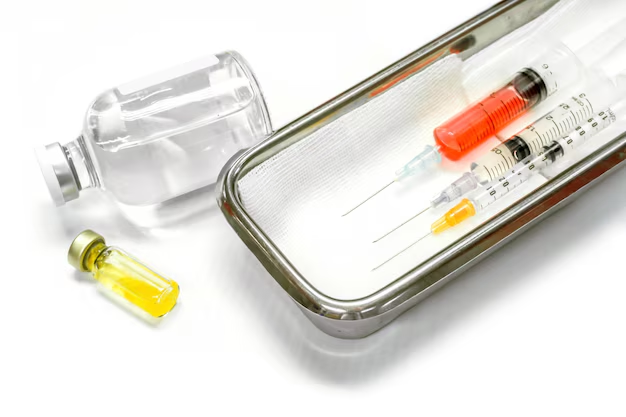Keeping Insulin Fresh: How Long Can You Store It in the Refrigerator?
If you're managing diabetes, insulin likely plays a central role in your everyday routine. Ensuring that your insulin remains effective is crucial, and storing it properly is a big part of this. So, how long does insulin actually last in the refrigerator? Let’s delve into this essential topic and explore best practices for insulin storage, understanding expiration dates, and related considerations that will help you maintain your medication in optimal condition.
Understanding Insulin Shelf Life and Storage
When it comes to medication storage, the way you store insulin can impact its efficacy. Insulin is a protein-based hormone that can degrade if not stored appropriately. Hence, correct storage is crucial for maintaining its potency, directly impacting its effectiveness in managing blood sugar levels.
Why Refrigerate Insulin?
Refrigeration is key because insulin can break down when exposed to heat or light. Storing insulin in the refrigerator helps maintain its stability and potency. That’s why manufacturers typically recommend keeping unopened insulin vials, pens, or cartridges in the fridge at a temperature between 36°F and 46°F (2°C to 8°C).
How Long Does Insulin Last in the Refrigerator?
Generally, unopened insulin stored properly in the refrigerator can remain effective until the expiration date noted on the packaging. This can often be a year or longer from the date of purchase. However, once opened, insulin products have a much shorter shelf life, which varies by type and brand. It’s essential to check the specific guidelines for the insulin type you are using.
Various Insulin Types and Storage Life
Different types of insulin might have distinct storage guidelines. Let’s break down the common types:
Short-Acting and Rapid-Acting Insulin
- Storage: Unopened vials and pens stored in the refrigerator can last until the expiration date. Once opened, most short-acting and rapid-acting insulins can be kept at room temperature but should be used within 28 days.
- Examples: Insulin lispro, insulin aspart, insulin glulisine.
Intermediate-Acting Insulin
- Storage: Unopened intermediate-acting insulin can also last until the expiration date in the fridge. After opening, it should be used within 42 days if stored at room temperature or as specified by the manufacturer.
- Examples: NPH insulin.
Long-Acting Insulin
- Storage: Similar to other categories, refrigerating unopened long-acting insulin keeps it viable until its expiration date. Once opened, it generally should be used within 28 to 56 days, depending on the product and room temperature conditions.
- Examples: Insulin glargine, insulin detemir.
Combination Insulin
- Storage: Like other insulins, unopened vials and pens can be stored in the refrigerator until expiration. Once opened, they should generally be used within 10 to 28 days.
- Examples: Premixed insulin formulations.
Practical Tips for Insulin Handling
To ensure that insulin remains effective, consider these practical tips when handling and storing it:
- Store insulin in the middle of the fridge rather than the door, which is more susceptible to temperature fluctuations.
- Avoid freezing insulin, as freezing temperatures can degrade the protein structure, rendering it ineffective.
- Keep insulin away from direct sunlight and heat exposure to prevent degradation.
- Always inspect insulin for any changes in appearance. If the liquid appears cloudy or discolored when it shouldn’t be, consult a healthcare professional before use.
- Label the opening date on your insulin vial, pen, or cartridge to keep track of its viability.
- Dispose of needles and syringes safely to prevent injury and contamination.
💡 Quick Tips for Insulin Storage:
- 🧊 Unopened: Store in the refrigerator until expiration.
- ☀️ Opened: Use within 28-56 days depending on type and storage condition. Check manufacturer guidelines.
- 🚫 Avoid freezing or heating: Insulin should always be kept in stable temperatures.
- 🔍 Inspect regularly: Look for changes in color or clarity.
Beyond the Refrigerator: Traveling with Insulin
Traveling with insulin requires special attention to maintain its efficacy. Here are some guidelines to consider:
Preparing for the Journey
- Carry insulin in a thermal insulated bag to maintain a stable temperature.
- Keep a supply of insulin at the ready—carry an extra amount in case of travel delays.
- Check temperature regulations for your destination to ensure insulin remains stable.
Flying with Insulin
- Do not place insulin in checked baggage, as the cargo area can reach freezing temperatures.
- Keep insulin and other supplies in your carry-on, along with documentation of your prescription if needed.
- Notify the airline about your medical supplies to avoid potential issues at security checkpoints.
Knowing When Insulin Goes Bad
Despite the best care, insulin can sometimes go bad. Here are vital signs to consider:
- Appearance: If the insulin is cloudy, contains particles, or has altered color, it may be compromised.
- Effectiveness: If you notice that your blood sugar levels are not being managed as expected, consult with a healthcare professional to rule out insulin degradation issues.
- Smell: While insulin typically has no odor, any strange smells may indicate spoilage.
Concluding Insights on Insulin Storage
Proper storage of insulin is more than a routine—it's integral to effective diabetes management. By understanding the requirements for different insulin types and adopting best practices, you can ensure that your insulin remains potent and effective throughout its intended shelf life.
Navigating life with diabetes comes with its challenges, but mastering the nuanced details such as insulin storage can offer peace of mind and empower you to maintain a healthier lifestyle. Remember, when in doubt about your insulin's condition or storage guidelines, consult healthcare professionals for the most reliable advice.
This guide provides foundational insights into extending the life of insulin through proper storage, ensuring you leverage the medication's full efficacy, thus helping you to better focus on living well with diabetes.
